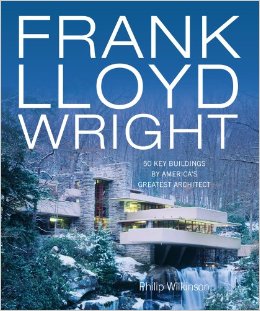|
| ผู้แต่ง |
Wilkinson, Philip. | | ชื่อเรื่อง |
Frank lloyd wright : 50 great buildings / Philip Wilkinson. | | ISBN |
978-085-73-8248-1
| | พิมพ์ลักษณ์ |
[Place of publication not identified] : Quercus Publishing Plc, 2010. | | เลขเรียก |
AR 57027 | | ลักษณะทางกายภาพ |
176 p. ; color illustration, 37 cm. | | หมายเหตุ |
Contents: The Life of Frank Lloyd Wright. Roots of an Architect: Frank Lloyd Wright House, 1889, Oak Park, Illinois; Blossom House, 1892, Chicago, Illinois; Winslow House, 1894, River Forest, Illinois; Roloson Row Houses, 1894, Chicago, Illinois; Romeo and Juliet Windmill, 1896, Spring Green, Wisconsin; Frank Lloyd Wright Studio, 1897, Oak Park, Illinois; Larkin Company Administration Building, 1903, Buffalo, New York; Unity Temple, 1905, Oak Park, Illinois; Midway Gardens, 1913, Chicago, Illinois; Imperial Hotel, 1914-22, Tokyo, Japan. The Prairie House and Beyond: Ward Willits House, 1901, Highland Park, Illinois; Dana House, 1902, Springfield, Illinois; Gerts Summer Cottage, 1902, Whitehall, Michigan; Darwin Martin House, 1904, Buffalo, New York; Barton House, 1903, Buffalo, New York; Hardy House, 1905, Racine, Wisconsin; Robie House, 1906, Chicago, Illinois; Coonley House, 1907, Riverside, Illinois; Meyer May House, 1908, Grand Rapids, Michigan; Coonley Playhouse, 1911, Riverside, Illinois; Taliesin, 1911, 1925, Spring Green, Wisconsin. Set in Concrete: Bogk House, 1916, Milwaukee, Wisconsin; Hollyhock House, 1919, Los Angeles, California; La Miniatura, 1923, Pasadena, California; Storer House, 1923, Hollywood, California; Ennis House, 1923, Los Angeles, California; Freeman House, 1923, Los Angeles, California. A New Beginning: Taliesin Fellowship Complex, 1932, Spring Green, Wisconsin; Fallingwater, 1935, Bear Run, Pennsylvania; First Jacobs House, 1936, Madison, Wisconsin; Paul and Jean Hanna House, 1936, Stanford, California; SC Johnson and Son Company Buildings, 1936, 1944, Racine, Wisconsin; Wingspread, 1937, Wind Point, Wisconsin; Taliesin West, 1937, Scottsdale, Arizona; Annie Pfeiffer Chapel, 1938, Lakeland, Florida; Schwartz House, 1939, Two Rivers, Wisconsin; Lewis House, 1939, Libertyville, Illinois; Pope-Leighey House, 1939, Falls Church, Virginia; Goetsch-Winckler House, 1939, Okemos, Michigan. The Later Works: Second Jacobs House, 1944, Middleton, Wisconsin; Shorewood Hills Unitarian Church, 1947, Madison, Wisconsin; Morris Gift Shop, 1948, San Francisco, California; Carlson House, 1950, Phoenix, Arizona; Price Company Tower, 1952, Bartlesville, Oklahoma; Price House, 1954, Paradise Valley, Arizona; Beth Sholom Synagogue, 1954, Elkins Park, Philadelphia; Toufic Kalil House, 1955, Manchester, New Hampshire; Annunciation Greek Orthodox Church, 1956, Milwaukee, Wisconsin; Solomon R Guggenheim Museum, 1956, New York, New York; Marin County Buildings, 1957, San Rafael, California. The Legacy of Frank Lloyd Wright. Index. | | หมายเหตุ |
Summary: Frank Lloyd Wright was the greatest American architect of the 20th century. During a long life he designed many of the most striking and iconic buildings in the USA - structures such as Fallingwater, a house poised above a waterfall in rural Pennsylvania, the Unity Temple, the USA's first all-concrete public building, and New York's amazing, spiral-shaped Guggenheim Museum. One of the most remarkable innovators in the history of architecture, Wright produced some of the most revolutionary buildings - breathtaking prairie houses, the Johnson Wax company headquarters with its Pyrex glazing and stunning mushroom columns, his own canvas-roofed desert home and office. Wright was a technological innovator too, pioneering inventions such as double-glazing, sound-absorbing office furniture, and prefabricated office partitions. But Wright did not pursue the new for its own sake. All his work is underpinned by a belief system: that buildings should be at one with their environment, that their form should grow from the needs of the client, and that site, floor plan, structural materials, and the use of the building should be in harmony. Wright called this set of ideas organic architecture, and both the philosophy and the buildings it produced are as inspiring now as they were when Wright was alive and working. This book showcases fifty of Wright's most important projects. It covers buildings throughout his whole career, from the house he built for himself in Oak Park, Illinois in 1889 to the landmark structures of his final years like the Beth Sholom Synagogue and the Guggenheim Museum. The projects include a handful of influential buildings that are no longer standing, such as the masterly Larkin Company Building and the Imperial Hotel Tokyo, as a tribute to designs that still fascinate architects and others who follow the work of this inspiring American master. Brief opening and closing chapters outline the architect's life and describe his wide influence, which, with his emphasis on architecture and environment, is as relevant as ever today. | | หัวเรื่อง |
Buildings --designs | | หัวเรื่อง |
สถาปัตยกรรม--อาคาร | | เชื่อมโยง* |
 Contents AR-57027.pdf (Fulltext) Contents AR-57027.pdf (Fulltext)  |
|

 แสดงรายละเอียดบรรณานุกรม
แสดงรายละเอียดบรรณานุกรม ขอยืม
ขอยืม



